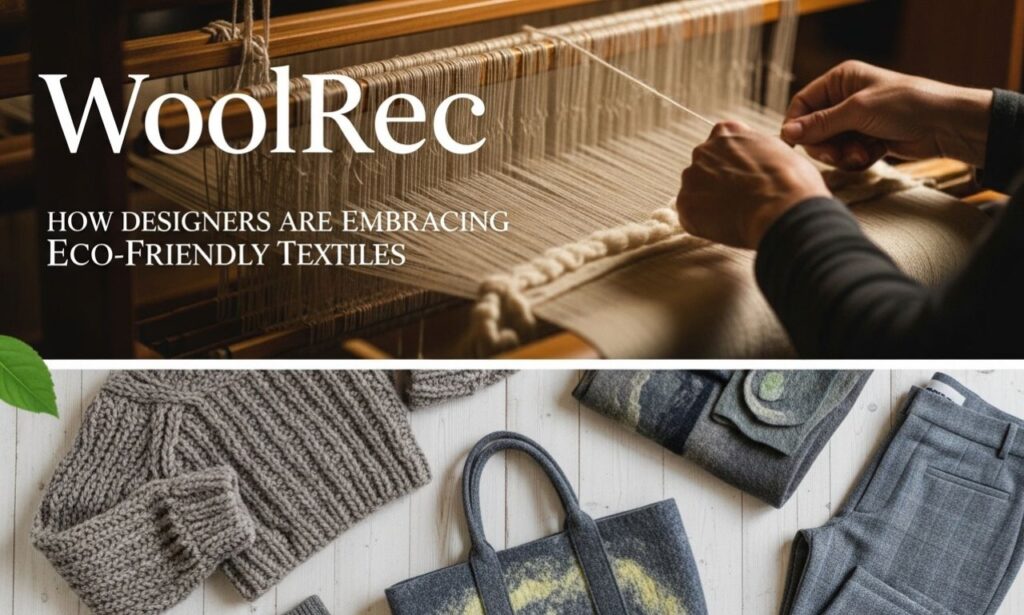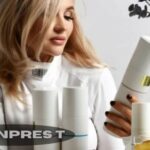In a world increasingly focused on sustainability, designers are seeking ways to create beautiful pieces without compromising the health of our planet. Enter WoolRec, a trailblazer in eco-friendly textiles that is redefining fashion norms. With growing awareness about environmental issues, many are now demanding greener choices—not just for themselves but for future generations as well.
WoolRec stands at the intersection of style and sustainability, providing innovative solutions that allow creators to embrace environmentally friendly materials. As more designers turn their attention towards this remarkable textile, it opens up exciting possibilities for unique designs inspired by nature’s timeless beauty. Let’s explore how WoolRec is transforming the fashion landscape and why it’s becoming an essential choice for forward-thinking brands.
What is WoolRec?
WoolRec is an innovative initiative designed to transform the textile industry. It focuses on creating eco-friendly wool textiles that reduce waste and promote sustainability. By utilizing discarded or surplus wool, WoolRec breathes new life into materials that would otherwise end up in landfills.
This process not only minimizes environmental impact but also supports circular fashion principles. WoolRec emphasizes high-quality craftsmanship while maintaining a commitment to ethical production practices.
What sets WoolRec apart is its dedication to transparency and traceability. Consumers can trust that the products they purchase are made from responsibly sourced fibers. Designers love incorporating these sustainable textiles, knowing they contribute positively to our planet.
As awareness around climate change grows, initiatives like WoolRec are becoming crucial for a more responsible approach to fashion design and consumption.
The impact of traditional textile production on the environment
Traditional textile production carries a hefty environmental burden. The industry is notorious for its high water consumption, with cotton alone requiring thousands of liters per kilogram produced. This depletes local water sources and threatens ecosystems.
Chemical dyes used in fabric manufacturing are another major concern. These substances often end up in waterways, polluting rivers and harming aquatic life. The toxic runoff poses risks not only to the environment but also to communities living nearby.
Furthermore, synthetic fibers contribute significantly to plastic pollution. When washed, these materials shed microplastics that infiltrate oceans and food chains.
Land use for growing conventional textiles can lead to deforestation and loss of biodiversity. As fertile land becomes scarce, soil degradation follows suit.
The cumulative effects paint a grim picture of traditional practices—highlighting an urgent need for sustainable alternatives like WoolRec that prioritize ecological balance.
Benefits of using eco-friendly textiles, specifically wool
Eco-friendly textiles offer a refreshing alternative to traditional materials, and wool stands out among them. It’s not just about sustainability; it’s also about performance. Wool is naturally breathable, regulating temperature in both warm and cold climates.
Another significant benefit of wool is its biodegradability. Unlike synthetic fibers that linger for centuries in landfills, wool decomposes naturally, enriching the soil rather than polluting it.
Wool also boasts inherent properties like moisture-wicking and odor resistance. This makes it ideal for activewear as well as everyday clothing.
Moreover, sourcing responsible wool supports ethical farming practices. Many producers prioritize animal welfare and sustainable grazing methods, ensuring minimal environmental impact.
By choosing eco-friendly textiles like WoolRec products, designers are aligning with values that resonate with conscious consumers today. The choice becomes more than just fashion; it’s a commitment to the planet’s health.
Innovative ways designers are incorporating WoolRec into their designs
Designers are getting creative with WoolRec, transforming it into striking fashion pieces. They’re blending traditional techniques with modern aesthetics to showcase its versatility.
Some designers utilize digital printing on WoolRec fabrics. This allows for vibrant patterns and designs that appeal to a younger audience. Others experiment with mixed media, combining wool with other sustainable materials like organic cotton or recycled polyester.
Knitwear is experiencing a renaissance too. Designers are creating intricate textures while ensuring minimal waste during the production process.
In addition, upcycling has become popular in the industry. By repurposing existing wool garments into fresh new styles, designers not only reduce textile waste but also create unique one-of-a-kind pieces.
These methods reflect an evolving mindset where innovation meets environmental responsibility in fashion design.
Consumer demand for sustainable fashion and its role in driving the use of eco-friendly textiles
Consumer demand for sustainable fashion has skyrocketed in recent years. Shoppers are increasingly aware of their choices and how they impact the planet. This shift is reshaping the textile industry.
More than ever, people seek brands that prioritize eco-friendly practices. They want transparency about sourcing, production methods, and material use. WoolRec fits perfectly into this growing desire for sustainability.
Designers who embrace WoolRec tap into a market eager for change. Eco-conscious consumers are willing to support brands that align with their values. This creates opportunities not just for innovative designs but also for ethical storytelling behind each piece.
The conversation surrounding slow fashion encourages designers to rethink traditional production methods and materials used in their creations. As demand rises, more companies will look towards solutions like WoolRec to meet customer expectations while benefiting the environment.
Challenges faced by designers when using WoolRec and how they are overcoming them
Designers often encounter challenges when integrating WoolRec into their collections. Sourcing high-quality materials can be tricky, as not all suppliers meet eco-friendly standards. This makes it essential for designers to build strong relationships with trusted providers.
Another hurdle is the perception of wool itself. Some consumers associate traditional wool with itchiness and discomfort. Designers are addressing this by showcasing the softness and versatility of WoolRec through innovative designs and marketing strategies.
Production processes also present difficulties. Maintaining sustainability while ensuring durability requires creative solutions. Many designers experiment with blends, combining WoolRec with other sustainable fibers to enhance performance without compromising environmental ideals.
Educating consumers about the benefits of eco-friendly textiles remains a priority. Engaging storytelling in marketing helps bridge knowledge gaps and fosters appreciation for sustainable choices in fashion.
The future of sustainable fashion and the role of WoolRec in it
The future of sustainable fashion is bright, with innovations driving change across the industry. WoolRec stands at the forefront of this transformation. Its eco-friendly properties appeal to both designers and consumers who prioritize sustainability.
WoolRec’s versatility allows for a range of creative applications. Designers are experimenting with textures and patterns that showcase its natural beauty while minimizing environmental impact.
As awareness grows, so does consumer demand for responsible choices in fashion. Shoppers increasingly seek brands that align with their values, making wool-based products more popular than ever.
Furthermore, advancements in technology mean WoolRec can be produced more efficiently. This aligns perfectly with the industry’s shift toward reducing waste and carbon footprints.
Collaboration among designers focused on sustainable practices will amplify these efforts even further. As they push boundaries using WoolRec, we can expect to see an exciting evolution in eco-friendly textiles that resonate deeply within global markets.
Conclusion
WoolRec is transforming the landscape of fashion design, offering a promising alternative to traditional textiles. As designers embrace eco-friendly materials, they contribute to a more sustainable industry. The innovative applications of WoolRec demonstrate that style does not have to come at the expense of our planet.
The environmental issues associated with conventional textile production are extensive and alarming. But through initiatives like WoolRec, there’s hope for significant change. By choosing wool-based options, designers can create beautiful garments while minimizing their carbon footprint.
As consumer demand for sustainable fashion grows stronger, it pushes brands toward greener practices. This shift in purchasing behavior encourages creativity within the industry as designers explore new ways to incorporate eco-friendly textiles into their collections.
Challenges in sourcing and working with materials like WoolRec exist but are being tackled head-on by resourceful creators. Their commitment ensures that sustainability becomes an integral part of future designs rather than an afterthought.
Looking forward, the role of WoolRec in shaping sustainable fashion cannot be overstated. It represents a movement towards mindful consumption and responsible production practices—essential steps needed to protect our environment.






